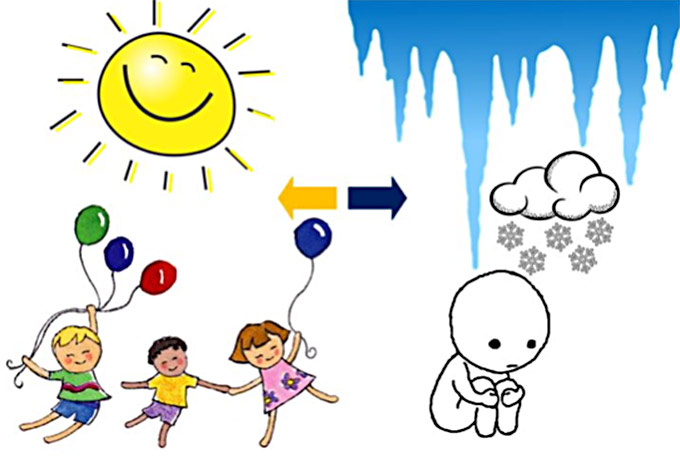Winter means we want to sleep more, eat more and stay inside. These are ‘normal’ responses to the colder weather. However, other responses can occur as well. The responses could be more sinister in nature.
Seasonal Affective Disorder (SAD) has been questioned by many over the years. This disorder is currently listed in the DSM-5 (Diagnostic and Statistical Manual of Mental Disorders V) as a depressive disorder. It can affect many people, regardless of age, financial status or whether that person has a previous diagnosis of a depression disorder or not. Children can be affected by SAD. The symptoms of SAD for children can be different than those of an adult.

What does SAD look like in children?
- over-sleeping
- irritability and being easily angered
- lack of interest in normally enjoyed activities
- wanting to be alone
- overall ‘lower’ mood
- over-eating
What can be done about SAD in children?
SAD can be treated in many ways:
- Regularly keeping a schedule of physical activity, especially cardio activities, is one thing you can start doing on your own.
- Outdoor activities are also important, as exposure to sunlight is particularly helpful in treating SAD.
- Allowing time for discussion about issues may allow the child to feel heard and express any negative feelings they may have as opposed to internalizing or dwelling on the negative feelings.
- Regular family time and play dates (socialization) will also help combat the lonely feelings your child may be experiencing.
Some children may show little to no symptoms of SAD and it is important to determine that the behaviours you may be concerned about can be explained by other reasons; ‘normal’ winter behaviour, sadness for another reason (death of a family member or loss of a friend) or illness. It is also important to remember that SAD has a pattern; symptoms dissipate in the spring and begin again in the fall/winter. Ultimately, SAD may require more intensive means to alleviate symptoms as has been mentioned previously: UV light therapy, regular counselling sessions and medication.
